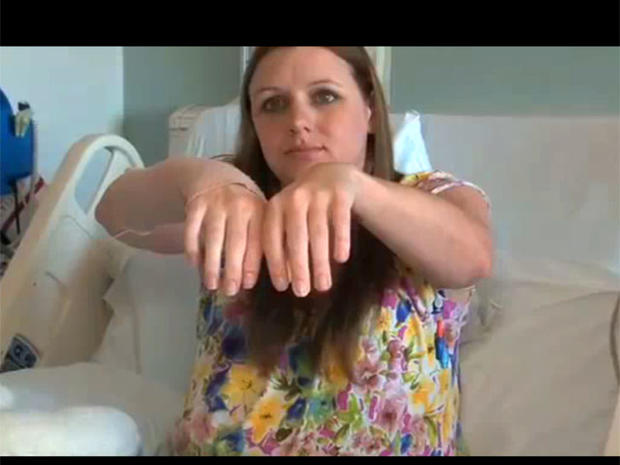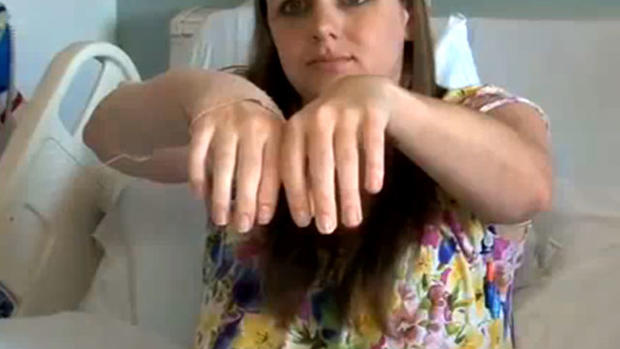Hand transplant: What next for Emily Fennell? (PICTURES)
(CBS/AP) Seven weeks after receiving the first hand transplant in the western U.S., Emily Fennell says she is looking forward to being able to do little things most people take for granted - like putting her hair in a ponytail or cutting up steak with a knife and fork.
PICTURES: Emily Fennell shows off hand transplant
The 26-year-old single mom was given a "donor hand" in a marathon 14-hour procedure at Ronald Reagan UCLA Medical Center on March 4, after losing her own right hand almost five years ago in a rollover car accident. Today she reunited with her doctors for a press conference to show off her new hand - the "gift" from an unnamed deceased donor - and talk about her experience.
"It has been surreal to see that I have a hand again, and be able to wiggle my fingers," she said, according to a statement released by UCLA. "My 6-year-old daughter has never seen me with a hand. She looked at it, touched it and said it was 'cool.' "
The transplant surgery was the 13th of only 14 such operations performed in the U.S. It involved a team of 17 surgeons, anesthesiologists, operating room nurses and technicians.
The first hand transplantation was carried out in Ecuador in 1964, before the development of modern immunosuppressive therapy. Since then, more than 40 hand transplants have been performed around the world, including several double hand transplants. The recipient of the first U.S. hand transplant in 1999 has lived with a donor hand for a little over a decade.
Fennell, who is from Yuba City, California, was discharged from the hospital on April 6 but is planning to spend a couple of months living near the hospital so doctors can monitor her - and so she can get occupational therapy.
How's it going? Very well, says Dr. Kodi Azari, surgical director of UCLA's hand transplantation program.
"She is making the emotional transition from calling it 'the' hand to 'my' hand," Azari said in the statement. "From a surgical standpoint, we achieved a good connection of the nerves and blood vessels, and the balance between the palm and back-of-the-hand tendons appears to be pristine."
Fennell will need to take antirejection drugs for the rest of her life - or her body's immune system could reject the new hand. And the hope is that occupational therapy will enable her brain to work seamlessly with the new hand and to give her as much dexterity as possible.
"It's been five years since she used those muscles, and they have atrophied, weakened and shortened," Renee Portenier, an occupational therapist at UCLA, said in the statement. "Now we have to wake up those muscles again to build strength and neural connections."
Fennell was right-handed before the June 2006 accident. She tried a couple of different prosthetic hands but stopped using them after finding them unsatisfactory.
Fennell doesn't have any sensation yet in the transplanted hand, the Los Angeles Times reported. She probably won't for several months. But she's optimistic that things will continue to improve.
"The minute you tell me I can't do something," she told the paper, "I do it."

